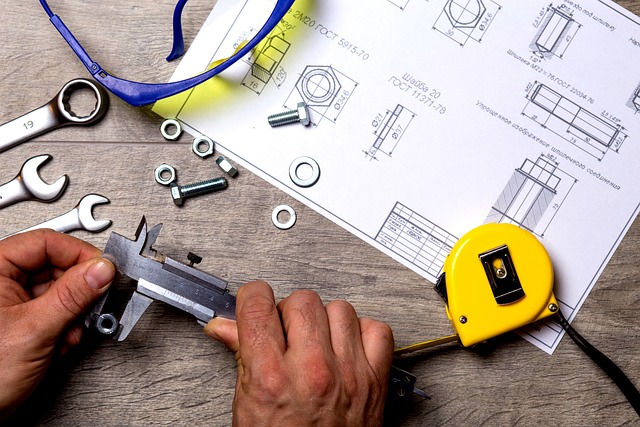Building your own custom DIY aquarium can be an exciting and rewarding project. Not only will you have a unique and personalized aquarium, but you’ll also have complete control over the design and specifications. In this blog post, we will guide you through the process, from planning to completion, including the necessary materials and considerations to ensure a successful build.
Step 1: Planning and Design
- Determine the Size and Shape: Consider the available space and decide on the dimensions and shape of your aquarium. Keep in mind the weight limitations and structural support required for larger tanks.
- Research and Select Fish Species: Research different fish species to determine their requirements in terms of tank size, water parameters, and compatibility. This will help you determine the appropriate dimensions and equipment for your aquarium.
Step 2: Gathering Materials and Equipment
- Aquarium Glass: Decide on the type of glass or acrylic panel you will use for your tank. Ensure it is thick enough to withstand the water pressure, especially for larger aquariums.
- Silicone Sealant: Choose a high-quality silicone sealant suitable for aquarium use, ensuring it is non-toxic and specifically labeled for fish tanks.
- Frame Materials: Depending on your design, you may require additional materials such as wood, metal, or plastic for constructing the frame or stand.
- Equipment: Research and purchase essential equipment like filters, heaters, lighting, and a suitable substrate.
Step 3: Construction Process
- Determining Measurements: Before selecting glass panels, you need to determine the measurements for your aquarium. Consider the available space, the number and size of fish you plan to keep, and any specific requirements for the species you are interested in. Common aquarium shapes include rectangular, square, bow-front, and hexagonal, but you can also create custom shapes.
- Glass Selection: When selecting glass panels for your aquarium, it’s important to choose a material that is strong and safe for holding water. Here are a few considerations:
- Glass Thickness: The thickness of the glass will depend on the size of the aquarium. As a general rule, use the following guidelines for thickness:
- Up to 30 gallons: 1/4″ (6mm) thick glass
- 30-50 gallons: 3/8″ (10mm) thick glass
- 50-100 gallons: 1/2″ (12mm) thick glass
- Over 100 gallons: 3/4″ (19mm) thick glass
- Safety Factors: It is always better to choose thicker glass to ensure safety and durability.
- Glass Type: You can use either float glass or tempered glass. Float glass is commonly used for smaller aquariums, while tempered glass is preferred for larger tanks due to its increased strength and resistance to cracking.
- Glass Thickness: The thickness of the glass will depend on the size of the aquarium. As a general rule, use the following guidelines for thickness:
- Sealing: Silicone sealant is a crucial component for building a custom aquarium, as it provides a water-tight seal. Here’s how to properly seal the glass panels:
- Clean and Prepare: Thoroughly clean the edges of the glass panels with a non-ammonia-based glass cleaner to remove any dust, dirt, or fingerprints. Dry the edges completely.
- Apply Silicone Sealant: Apply a bead of silicone sealant along the edges of one of the glass panels that will be joined. Make sure the bead is continuous and even, covering the entire length.
- Join the Panels: Carefully press the second glass panel against the first, aligning the edges. The sealant will spread and create a watertight bond. Apply gentle pressure to ensure proper adhesion.
- Remove Excess Sealant: Use a clean finger or a silicone smoothing tool to remove excess sealant and create a smooth finish.
- Cure Time: Allow the sealant to cure for the recommended time specified by the manufacturer before adding water. This is usually around 24 to 48 hours.
- Remember, proper sealing is crucial to prevent any leaks. Ensure the sealant you use is specifically labeled for aquarium use and is non-toxic to fish and other aquatic life.
- By carefully selecting glass panels of the appropriate thickness and properly sealing the aquarium, you can create a safe and reliable custom DIY aquarium that will provide a beautiful and functional home for your aquatic pets.
- Building the Frame (Optional): If you choose to have a frame, construct it using the appropriate materials, ensuring it provides sturdy support for the tank.
- Installing Equipment: Place the necessary equipment, including filters, heaters, and lighting, in the designated areas within the tank. Ensure all electrical components are properly sealed and follow safety guidelines.
- Adding Substrate and Decorations: Add the desired substrate, such as gravel or sand, to the tank. Decorate the aquarium with rocks, driftwood, or artificial plants to create a natural-looking environment.
- Filling and Cycling the Tank: Fill the tank with dechlorinated water and begin the cycling process to establish a beneficial bacteria colony that helps maintain water quality.
Step 4: Maintenance and Care
- Regular Water Testing: Monitor and maintain appropriate water parameters, including temperature, pH, and ammonia levels. Test the water regularly and make necessary adjustments to ensure a healthy environment for your fish.
- Routine Cleaning: Perform regular water changes, clean the tank walls, and maintain the equipment to prevent algae growth and maintain water clarity.
- Fish Health and Feeding: Regularly monitor your fish for any signs of illness or stress. Provide them with a balanced diet and ensure their specific needs are met.
By following this step-by-step guide, you’ll be able to create your own custom DIY aquarium. Remember to plan carefully, gather the necessary materials, and ensure proper construction and maintenance. With patience and dedication, you’ll be rewarded with a stunning and personalized aquatic habitat for your fish to thrive in.

